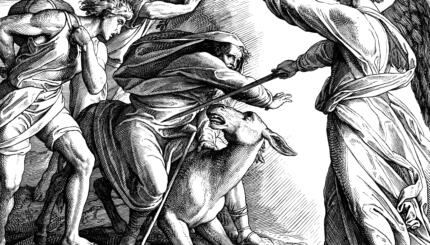Jewish weddings are recognizably similar to non-Jewish wedding ceremonies, and our non-Jewish neighbors have religious traditions–confirmation, first communion–analogous to the Bar Mitzvah, to celebrate their children’s coming of age religiously. But I know of nothing in any religious tradition to compare to a bris, the ritual circumcision of a newborn Jewish boy.
Circumcision involves the surgical removal of the foreskin from the male sex organ. In a world where most religious rituals consist of words and gestures, a world in which explicit references to sexual organs, let alone involvement of sexual organs in religious ritual, is rare, circumcision is certainly unique. It is an ancient ceremony, one that retains its power to move us even as it makes us anxious and uncomfortable…
Often, people will feel squeamish, avert their eyes, even leave the room during the brief ceremony, returning for the festive meal (is there ever a Jewish gathering without one?) a few moments later. Technically, a bris ceremony is not required to make the child Jewish (unlike, say, an infant baptism). The exception is the case where the child’s mother is not Jewish and the circumcision is for purposes of converting the infant to Judaism. Yet, over the centuries, Jews have risked humiliation and danger to fulfill this commandment.
What is this rite so different from anything else we do in our Judeo-Christian society? Like other Jewish rites, it does not change things; it celebrates them. In this case, what is being celebrated is the continuity of Jewish identity, passed on from father to son. At the bris, the child is given his religious name. Typically he will be named after a deceased relative, to give that relative a measure of immortality, to “make the name live on” and to emphasize that the newborn child is the latest link in a long chain. Presumably the foreskin is designated to be removed from the generative organ to symbolize the fact that Jewish identity is passed on by birth, from father to son, from generation to generation.
In the ancient Near East, many societies circumcised their male children. In the story of Saul and David in First Samuel, the Philistines, a Greek people rather than a Semitic tribe, were considered unusual and referred to as “the uncircumcised” because they did not practice that custom. But in that era, boys were circumcised when they became adolescents, as a preparation for being sexually active and as an ordeal of entry into the adult community. (And you thought studying for a Bar Mitzvah ceremony was hard!) Ancient Judaism removed the sexual dimension from the ritual by moving it back to infancy.
The complete name of the ritual is bris (or brit) milah, with the second word meaning “circumcision” and the first word meaning “covenant.” The circumcision ceremony identifies the Jewish child as a member of the covenant with God by virtue of his birth as a Jew into a Jewish family.
Obviously the week-old infant is in no position to understand what is happening to him. But as he grows older and learns about it, and as he one day arranges for a similar ceremony for his own son, he comes to comprehend the twofold meaning of the bris: A Jew is born into the covenant with God whether he wants to be or not, and this covenant involves pain and sacrifice as well as honor and sanctity. He may grow up to be a good Jew or a bad Jew (however that is defined). But he cannot ignore his Jewish identity. Like his parents, like his physical traits and the century and country of his birth, it is one of the facts of his life. As in the Book of Jonah, as in the Book of Ezekiel, God pursues us even when we would rather not deal with Him. The covenant can be violated; it cannot be escaped. It is part of who you are, branded into your flesh at birth.
Reprinted with permission from To Life! A Celebration of Jewish Being and Thinking (Little, Brown and Company).


